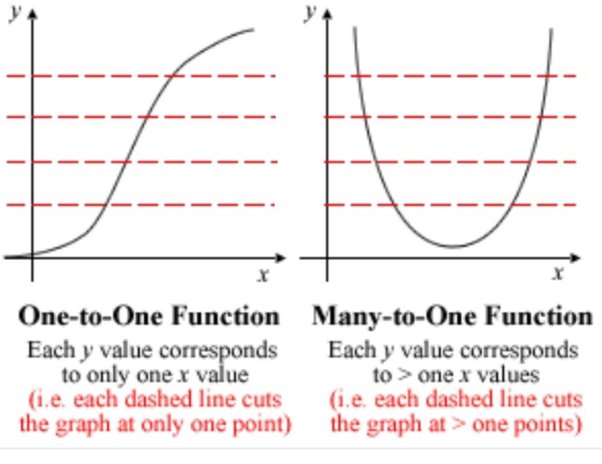A function is some process that transforms elements from one set to another.
A function, , which maps a set, onto another set, can be notated as:
Properties
Injective
A function is said to be injective if it is one-to-one, i.e. there is only one value in that maps to . More precisely:
600 is injective in the drawing above, because even though not everything is mapped, there is only one, unique element in that maps to another unique element in . is not injective, because both and equal .
Graphically, if the function is a real that can be mapped on the Cartesian Plane, i.e. , then is injective if a horizontal line intersecting each value of y does not have multiple intersections with the function.

Surjective
A function is surjective if every element of it’s codomain has at least one corresponding element in the domain, i.e. for every element in , there exists an element in such that . More precisely:
600 Here, is non-surjective because the element has no corresponding value in . , however, is surjective, because every element in has one or more corresponding elements in .
Bijective
A bijective function is one that is both injective and surjective. In other words, every element in must have one corresponding element in .